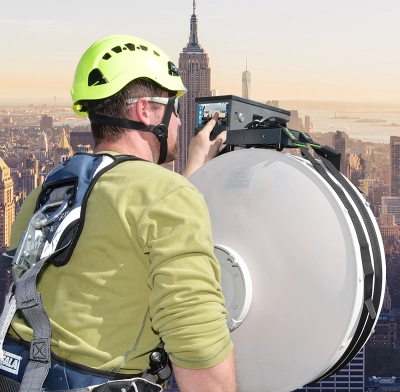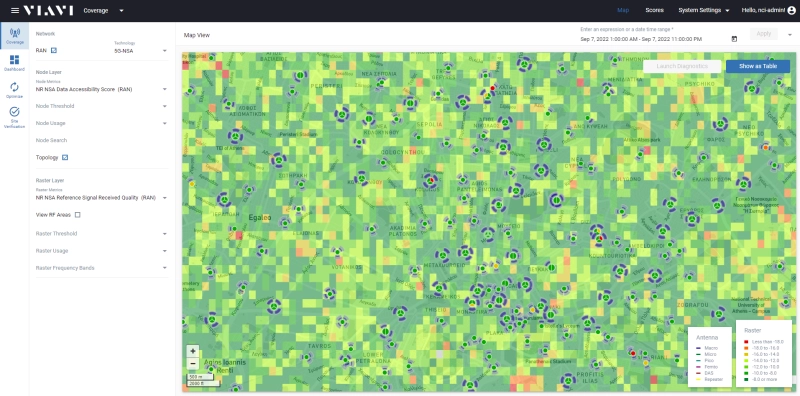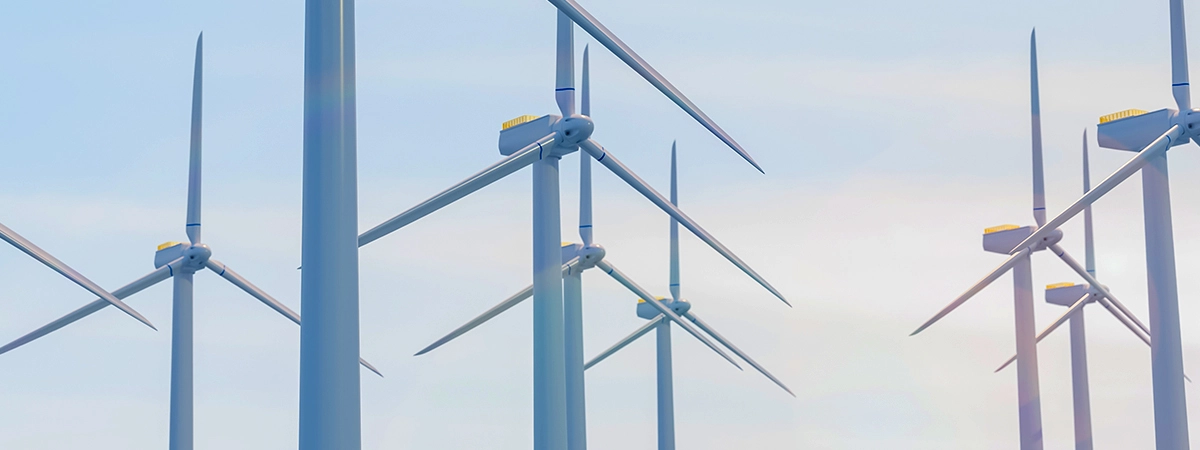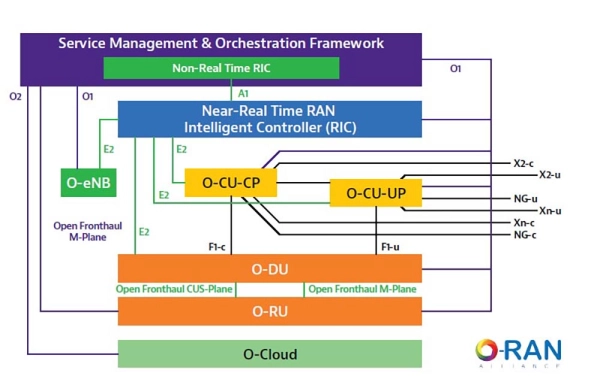RAN Energy Savings
Reduce RAN energy consumption with end-to-end network test and optimization solutions.
The power consumption of 5G hardware is between two and four times greater than 4G, raising great challenges for site infrastructure construction1.
Even before 3GPP had included reduced power consumption among its objectives, 5G has been raising questions about network energy savings from both the short term (OPEX) and long term (climate) perspectives.
Despite improved watt/bit performance overall, 5G service providers aspiring to a lean and intelligent energy spent model are confounded by the sheer volume of cells required to keep pace with the demand, and the limited mmWave range of 5G RAN elements.
Network function virtualization (NFV), fiber multiplexing, liquid crystal (LC) antenna technology, and efficient, passively cooled radio units move the needle towards better energy conservation. But only with a holistic network test and optimization approach, you can ensure the future of 5G is a green and profitable one.
Shift today from static, over-provisioned resources to self-aware processes with efficient energy consumption.
Achieve Network Energy Savings in the Lab
With the RAN consuming over 70% of 5G network energy, and most of this energy going to non-RF elements, O-RAN brings significant energy saving opportunities.
Cloud-native RAN Intelligent Controllers (RICs) enable RAN operations to be optimized at scale and allow providers to onboard new applications that improve network performance and efficiency.
Artificial Intelligence (AI) and Machine Learning (ML) transform the RIC into a dynamic, real-time power management tool with limitless potential – and it all starts with xApp and rApp training in the lab. By emulating real-world cells, energy usage, and subscriber movements, the TeraVM AI RSG Test trains the RIC to operate within an optimized energy and QoE window. The effectiveness of recommended RAN optimization decisions and cell configurations are assessed and fine-tuned in the lab prior to deployment.
Improve Efficiency in the Field
New 5G cell sites must be built and operated according to their design specifications to leverage built-in opportunities for network energy savings. Massive MIMO antenna arrays reach a wider area with less power, while beamforming intelligently targets users to streamline transmissions.
When a new cell-site is deployed, you need to ensure it is optimized to save energy costs and reduce carbon footprint. For this, you must get it right first time and prevent unnecessary truck rolls and multiple classes of engineers having to visit the site to deliver or fix it.
Precise RF antenna alignment to reduce RF overlapping and coverage gaps, and microwave antenna certification to prevent misalignment, data loss, and retransmission allow service providers to fully realize the potential of these RAN advancements.
The VIAVI 3Z RF Vision is a forward-looking antenna alignment tool that synchronizes real-world alignment with RF design intent.

Backhaul and x-haul fiber links can become the unsung heroes of RAN energy savings in the field when they are optimized to eliminate link loss and maximize bandwidth efficiency. Certifying fiber link performance can prevent data retransmission issues and early failures from becoming a hidden energy sink.
The VIAVI OneAdvisor 800 Wireless combines multiple fiber and RF tests in one device, including Over-The-Air Sync and Timing, Fiber Test, X-Haul or Interference Analysis
Assure constantly through Location Intelligence

5G radio units have been designed with improved efficiency in mind, but shorter transmission distances coupled with higher usage rates have the potential to undercut these savings. Once the network is deployed, how do you continue to optimize radio network power consumption without impacting the user experience?
Location intelligence after deployment is becoming a fundamental piece of the energy saving puzzle. By continually capturing and analyzing the wealth of data provided by subscriber events, location intelligence introduces opportunities for improvement in RAN power consumption and subscriber QoE simultaneously.
Fine details from mobility data and subscriber-centric insights are provided to a ML-driven digital twin for analysis. RAN energy savings driven by fully or partially powered off cells and e-tilts can be predicted and quantified by the digital twin in parallel, to safeguard the subscriber's mobile experience. Adjustments can then be implemented to maximum advantage as part of a continuous optimization loop.
We can help
5G RAN relies on many new technologies working in harmony to meet the bandwidth, latency, and density expectations of subscribers. In a similar way, 5G operators and service providers must combine a variety of end-to-end efficiency tools and practices to make a sizable dent in network energy consumption.
VIAVI has an end-to-end portfolio encompassing robust tests, verification and assurance, and solutions to help you meet sustainability imperatives and achieve better energy consumption patterns.
Huawei, “5G Power: Creating a green grid that slashes costs, emissions & energy use”, July 2020.
Let Us Help
We’re here to help you get ahead.


